History
Wat Na Phra Men (also spelled Phra Mane or Phra Meru) was one of only a few temples to escape the Burmese army's razing of
Ayutthaya in 1767.
What to see
The ubosot is one of the most complete examples of late Ayutthayan wat architecture. Built in the mid-15th century, with
its thick walls and slit windows, it was one of the largest in the city.
The small viharn to the right contains fading wall murals and a beautiful green sandstone Buddha dating from the Mon Dvaravati period and sitting on a throne in the
"European" position. The statue was found at Wat Phra Men in Nakhon Pathom and moved to Ayutthaya by King Rama IV. Opposite the
ubosot is a covered area with statues of deities, including a large one of Phra Setthi Nawakot, "the nine-faced Buddha."
There is an entrance fee of 20 baht for foreign visitors.
Getting there
The temple is to the north of the island. Hire a bicycle at the guesthouse area on Soi 2, pick up a map at the tourist
office near the intersection of Sri Sanphet Road and Rotchana Road, cross the river near Wat Thammikkarat and turn left.
Updated: July 15, 2015.
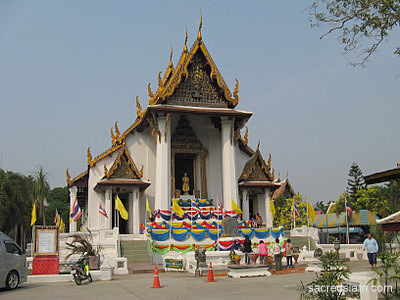
Wat Na Phra Men ordination hall (ubosot).
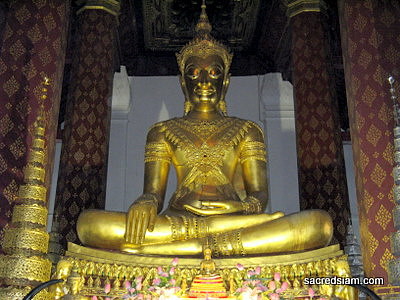
Wat Na Phra Men bronze Buddha image wearing royal regalia.
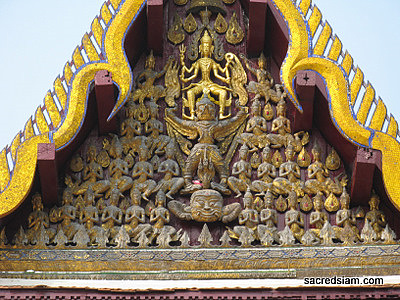
Wat Na Phra Men carved wooden gable.
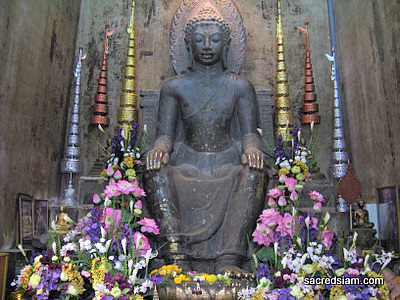
Phra Khandhararat green sandstone Dvaravati Buddha at Wat Na Phra Men.
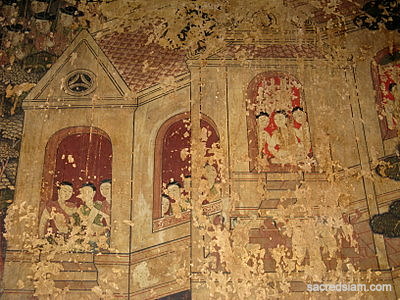
Wat Na Phra Men wall mural.
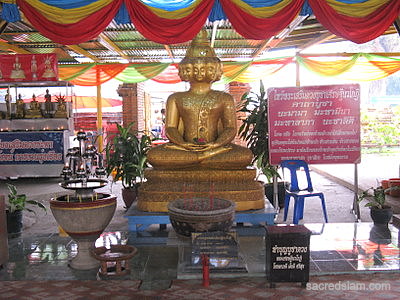
Phra Setthi Nawakot (9-faced Buddha) at Wat Na Phra Men.
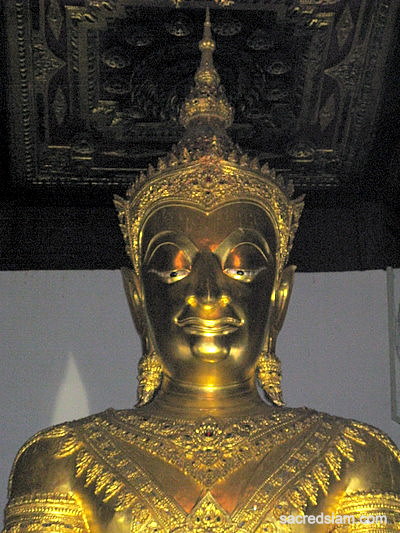
Phra Buddha Nimit in royal regalia at Wat Na Phra Men.







